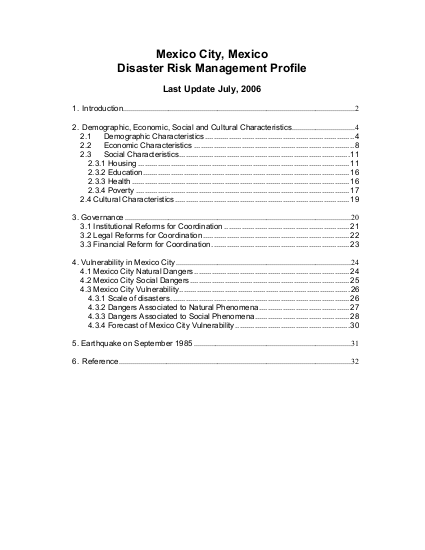
Mexico City is one of the biggest cities in the world, and the largest urban area in Mexico. These characteristics have made it a true challenge in urban planning, and of course, the control and management of the risks the city faces. In just 4 % of the national territory, Mexico City has concentrated 18.34 million inhabitants, 24.35% of the national industry, 21.4% of the national economic division, and approximately 60% of the total investments and banking activities. However, the high concentration of population and economic activities in this City are not a recent phenomenon.
The pattern of urbanization of the city is dispersed and chaotic due to the absorption of many rural areas. This expansion has had high social and environmental costs which increase social inequalities and the uneven provision of infrastructure, services, and urban equipment.
Resource collections
- UN Habitat - Urban Response Collection
- Urban Response - Urban Crisis Preparedness and Risk Reduction
- Urban Response Collection - Community Engagement and Social Cohesion
- Urban Response Collection - Economic Recovery
- Urban Response Collection - Environment and Climate Change
- Urban Response Collection - Housing, Land and Property
- Urban Response Collection - Urban Crisis Response, Recovery and Reconstruction
- Urban Response Collection - Urban Resilience